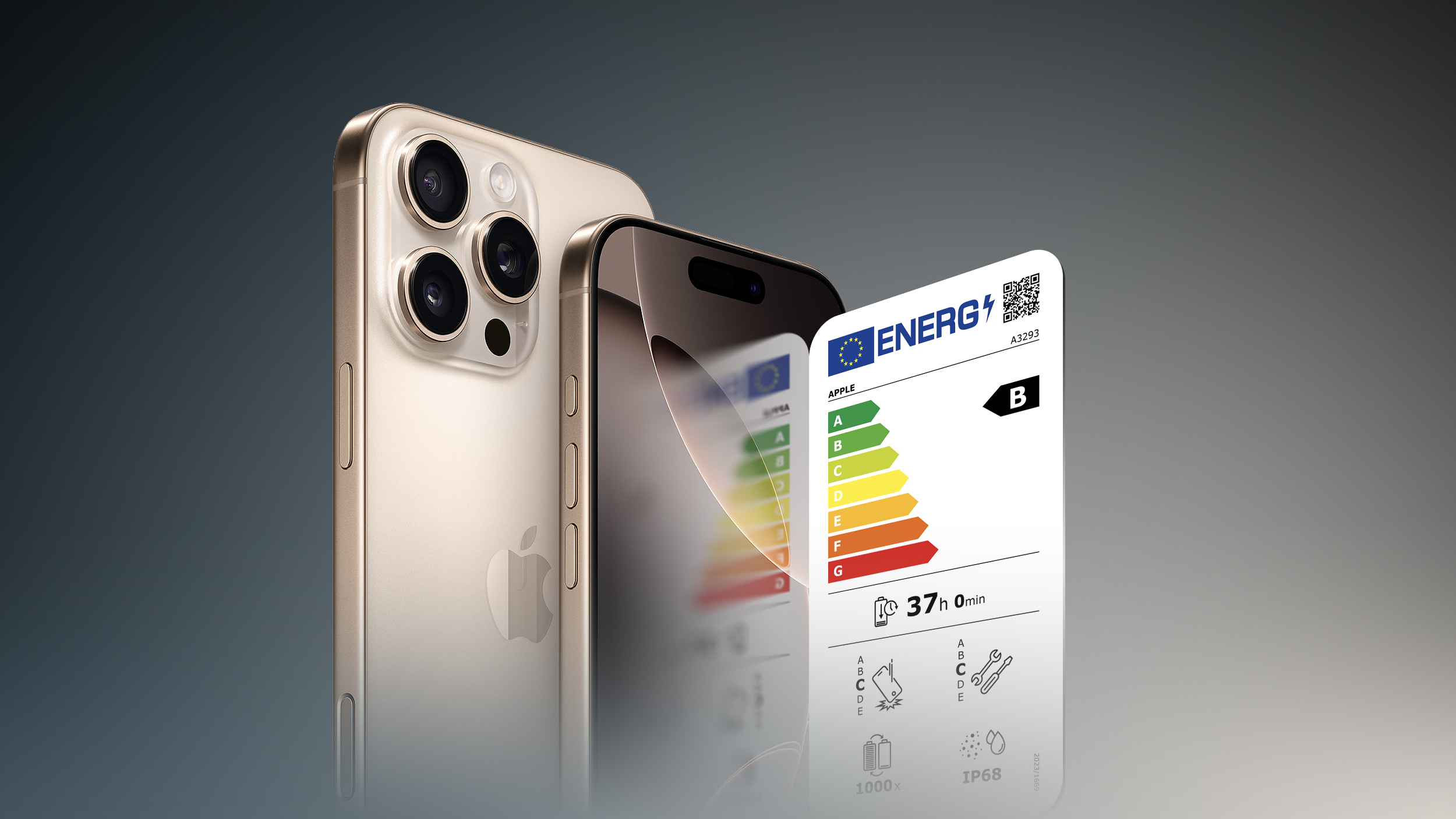
To comply with a new regulation that takes effect today, Apple has added an energy efficiency label to its iPhone and iPad pages in EU countries. Apple is also required to start including a printed version of the label with the devices sold there.

The label grades a given iPhone or iPad model's energy efficiency from a high of A to a low of G, based on the EU's testing parameters. However, Apple said that certain aspects of the testing methods outlined by the European Commission are "ambiguous," so it chose to be conservative with its scores until testing is standardized.
In a 44-page document detailing its testing methodology for the labels, Apple said its current iPhone models qualified for the highest energy efficiency grade of A, but the company voluntarily downgraded these scores to a B as a cautionary measure:
The label also provides details about a given iPhone or iPad model's battery life per full charge cycle, repairability grade, impact resistance, ingress protection rating for water and dust resistance, and how many full charge cycles the battery is rated for. Likewise, this information is based on Apple's interpretation of the EU's testing parameters.As an additional cautionary measure, Apple went one step further and downgraded some of its scores to factor in test method ambiguities and variance. For example, Energy Efficiency Index scores for iPhone models on the EU market in June 2025 all qualified for the highest "A" grade, but Apple chose to voluntarily derate scores to a "B" grade to minimize the probability that a third-party tester interpreting the regulation differently would achieve a lower grade. We also downgraded scores for the Repeated Free Fall Reliability Class for the same reason.
On the web, the label can be viewed by clicking or tapping on the colorful little tag icon on various iPhone and iPad pages on Apple's localized websites for EU countries. It is shown on both Apple's main product marketing pages for all iPhone and iPad models that are currently sold in the EU, and on the purchase page for those devices.
The label is accompanied by a product information sheet (PDF) that provides a comprehensive overview of even more details, such as the device's battery capacity in mAh, screen scratch resistance based on the Mohs hardness scale, the minimum guaranteed timeframe for availability of security updates, and much more.
On the European Commission's website, there is a database that lets you view energy label information for smartphones and tablets sold in the EU.
More details about the label are available on the European Commission's website.
EU countries include Austria, Belgium, Bulgaria, Croatia, Cyprus, Czech Republic, Denmark, Estonia, Finland, France, Germany, Greece, Hungary, Ireland, Italy, Latvia, Lithuania, Luxembourg, Malta, the Netherlands, Poland, Portugal, Romania, Slovakia, Slovenia, Spain, and Sweden. The labels are also shown in Norway and Switzerland.
Article Link: Apple Adds Energy and Battery Labels to iPhone and iPad Pages in EU
Last edited:

